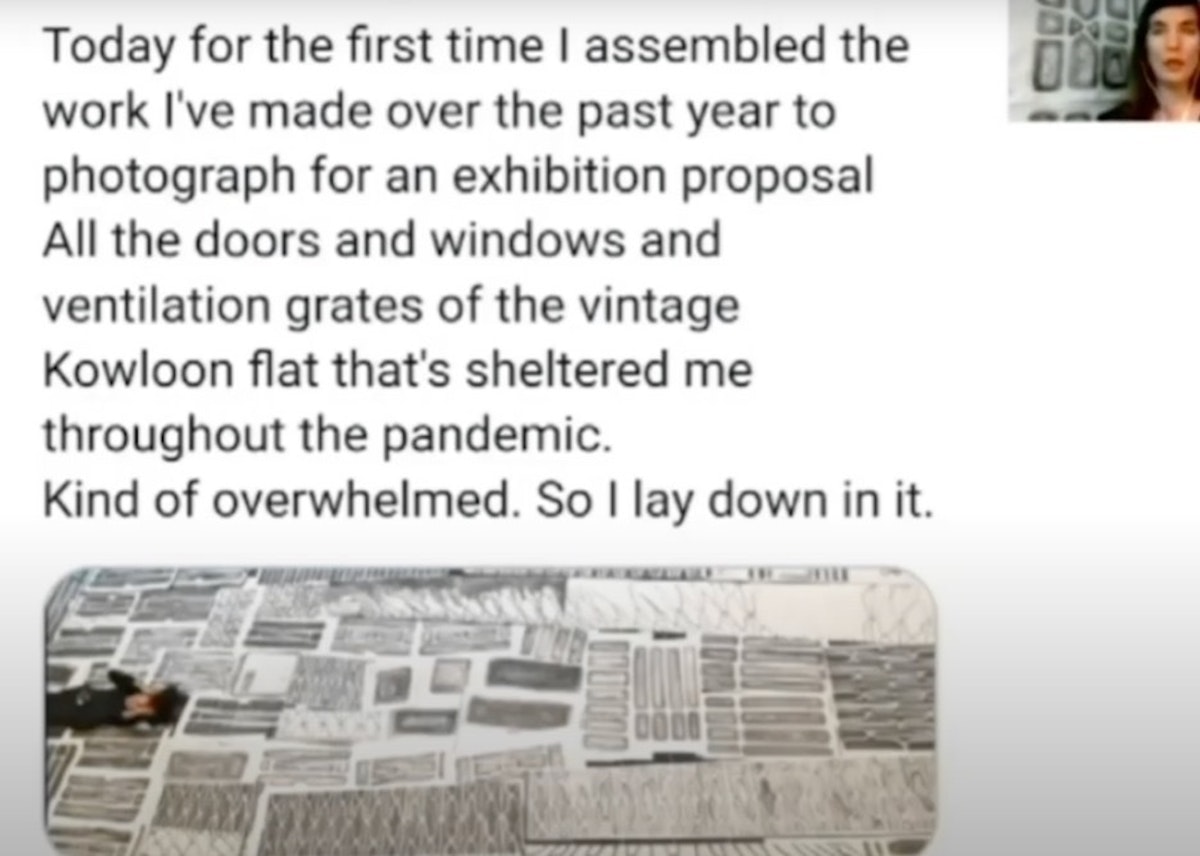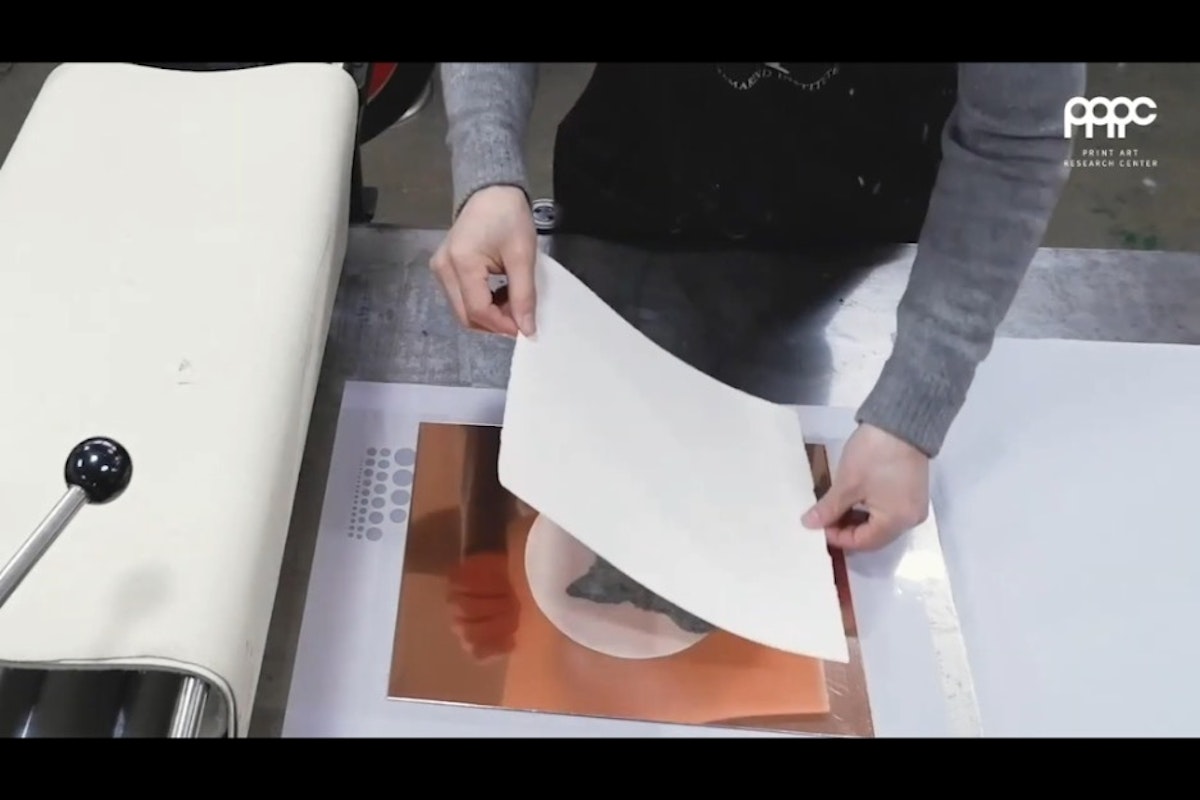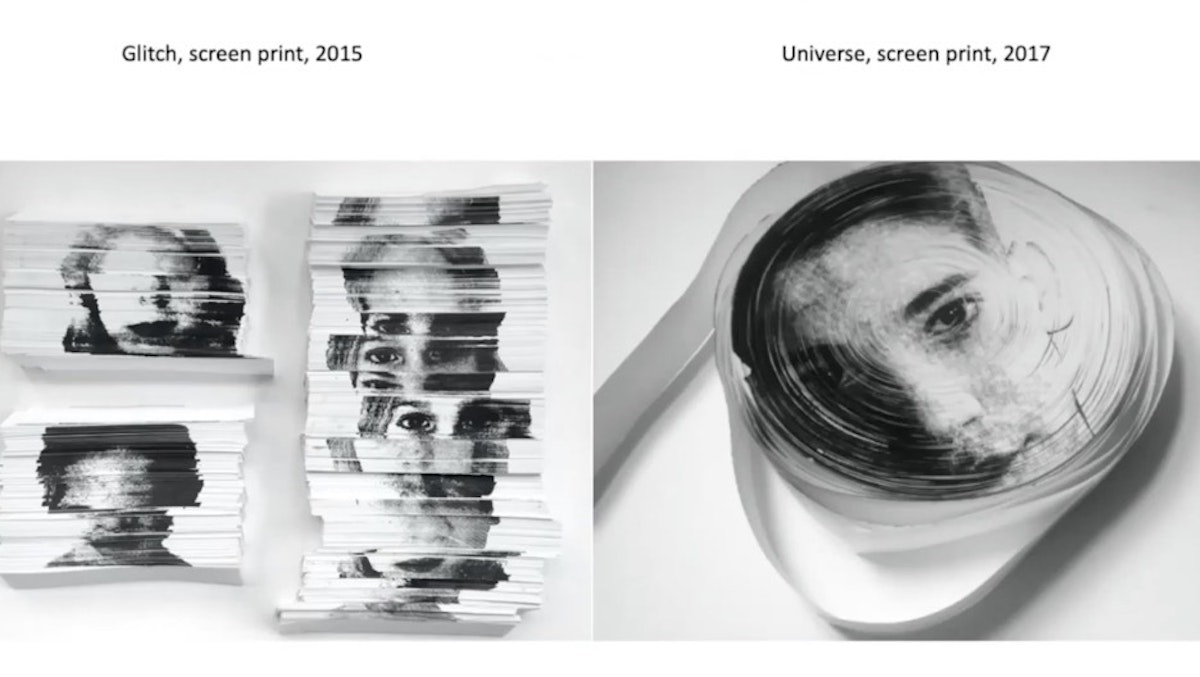Lakyla Thomas on The Impact 11 PrintMaking Conference
A first-person account of the Impact 11 International Multi-disciplinary Printmaking Artist, Concepts, and Techniques Conference by Lakyla Thomas (BFA '23).
Editor's note: In April 2021, Lakyla Thomas (BFA '23) joined a group of 15 Stamps undergraduate students as Stamps Fellows to attend the virtual conference Impact 11, the International Multi-disciplinary Printmaking Artist, Concepts, and Techniques Conference.
The largest printmaking conference to originate from Hong Kong, Impact featured 80 speakers over six days and attracted a variety of attendees from across the globe, including artists, curators, demonstrators, instructors, and residency creators.
Attendance to the conference was supported by DEI funding from the Penny W. Stamps School of Art & Design through the efforts of 2D Media Studio Coordinator Nick Dowgwillo, lecturer Sally Clegg (MFA ’20), and Ellie Schmidt (MFA ’22).
The following first-person account offers Thomas’ experience of the conference and her key takeaways.
Artist’s Inspiration
As a conference attendee, I found the presentations and speakers to be inspirational; they introduced participants and viewers to numerous forms of printmaking technique, production, installation, and resources, as well as established printmaking communities. Artists readily discussed and communicated their inspirations for the various creations they undertook.
Particularly insightful was Elizabeth Briel, an artist living in Hong Kong, who discussed how her immediate environment and surroundings provided inspiration for her printmaking. Using Taiwanese calligraphy paper and Portuguese graphite in various forms Briel created a record of her time and living space through an expansive series of ventilation relief prints, ensuring to capture historical evolution and influences of the space. Additionally, with the knowledge that the building she currently resides in will be torn down, she was inspired to capture and record the interior edifice using printmaking and embossing techniques which allowed her to document and record the space and thus preserve the space’s history, as it existed during her engagement with space. Many of her prints were done during the COVID Pandemic quarantine which strongly associates their relevance and association to living space. The intimate recording of the apartment/building features, along with her expressed anticipation that the building will no longer exist in a few years from now was considered by her as “a special time.”

I find this type of inspiration for printmaking moving. Capturing spaces and their historical elements in relation to the area and city of Wuhan, Briel’s residential neighborhood, while tying it together with environmental issues like pollution and ventilation and architectural design, which allows for cooling, allowed her to create a lasting intimate record of her surroundings while also capturing the historical architecture and nostalgic imagery for the people of Hong Kong.
Technique
As a Stamps conference attendee, I find it important to comment on the benefit to artists sharing their methods and printmaking products and techniques. The steps they engaged in varied from a traditional appreciation of the art form to very innovative approaches and mediums. Chunwoo Nam demonstrated the detailed and complex process of Chine-collé for pre-printed images starting from making glue from scratch as well as showed how to carefully and purposefully utilize a variety of tools and materials to create beautiful, finished etchings and lithographs.

While Chungwoo Nam’s printmaking techniques focus on precision and accuracy for creating prints that will last for ages, Eszter Sziksz’s appeals to ephemeral beauty and temporal properties of print when images are printed on non-traditional surfaces, such as ice and the edges of stacked paper. She is not interested in perfect mastery of the printmaking process, but rather using it as a medium to share and connect with her audience.

The purpose of her technique is to create an experience with her audience that will last in their memory. While her art is temporary, ice melting away in a matter of minutes, or paper decaying overtime, the experience of viewing the work in its fleeting moments leaves a lasting impression and lives on in the memories of those who view it. The beauty that results from her prints and overall technique come from how each is unique and unpredictable.
Artist Innovation
A rather innovative project described during the conference was SOP, or The State of Print produced by Paul Harrison, Noelle Noonan, Catherine Hehir, and Scott Hudson during a residency at the Tyrone Guthrie Centre. The speaker explained how The State of Print was thoroughly developed, including but not limited to a flag created with significant and meaningful designs and its own set of procedures for handling and care.
The formal currency of The State of Print are known as SOPs, “Oversized and eye-catching banknotes to nowhere,” which have been printed originally by hand and then with the help of a risograph for convenience and quantity. The notes are beautiful and depict fantastical sights, though the actual value and exchange rate of the currency is always in flux which make them a sought after keepsake. The State of Print has developed everything from passports to ceremonial robes with their own cultural practices and more. It was also mentioned that the State of Print has its own national anthem. Because of these aspects it seems like a truly wonderful place to visit and I would love to one day see other art mediums develop their own states to create a diverse art country.
Closing Notes
The Impact 11 Conference was a wonderful and memorable experience. Seeing numerous and diverse interpretations, uses, and experiences with the printmaking medium has been inspiring. The conference also made the most of the digital format as there were live presenters, talks, demonstrations, and pre-recorded presentations. Seeing the artist demonstrate their work and process in their studios and residency locations also allowed for a unique and insightful experience.